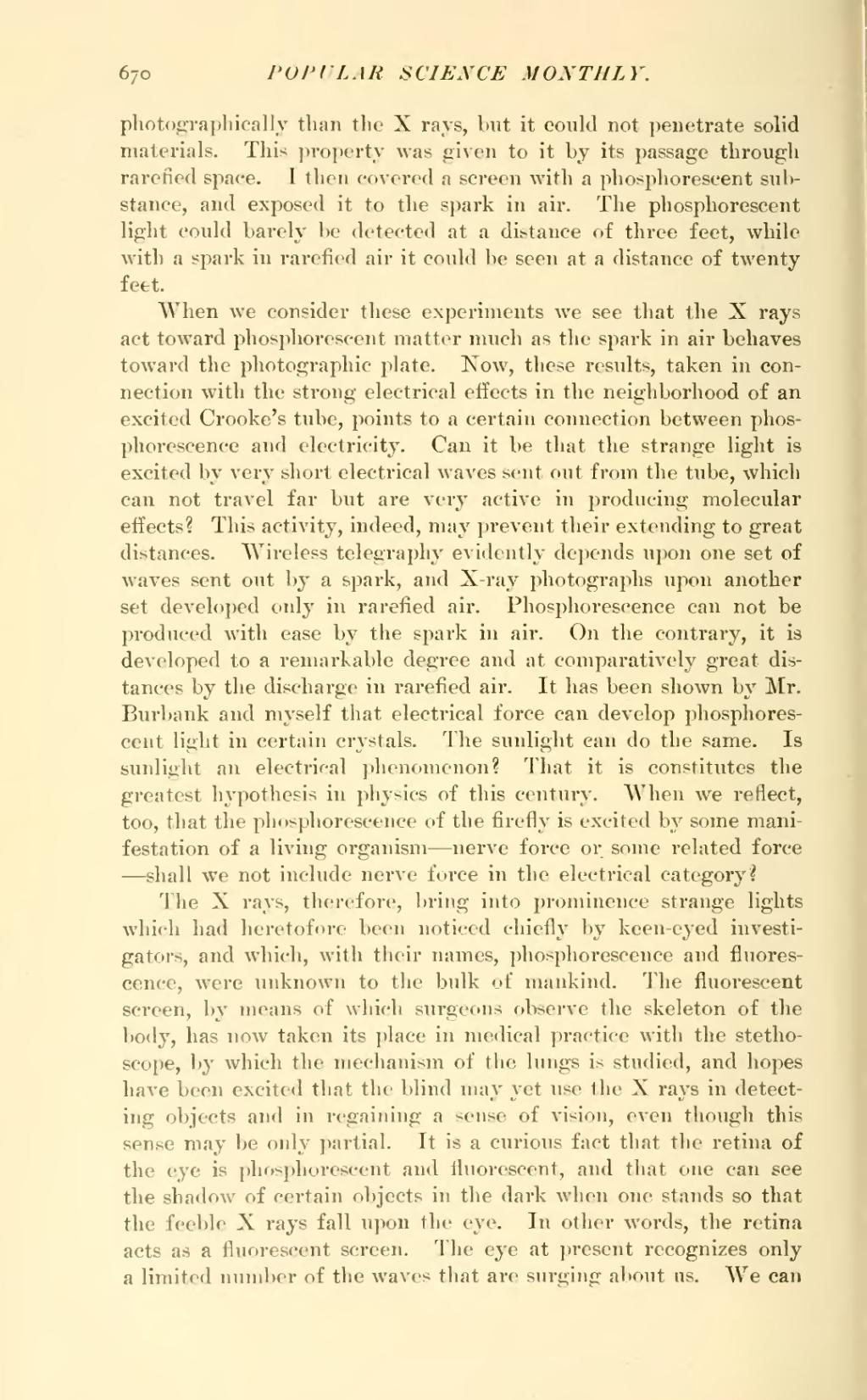photographically than the X rays, but it could not penetrate solid materials. This property was given to it by its passage through rarefied space. I then covered a screen with a phosphorescent substance, and exposed it to the spark in air. The phosphorescent light could barely be detected at a distance of three feet, while with a spark in rarefied air it could be seen at a distance of twenty feet.
When we consider these experiments we see that the X rays act toward phosphorescent matter much as the spark in air behaves toward the photographic plate. Now, these results, taken in connection with the strong electrical effects in the neighborhood of an excited Crooke's tube, points to a certain connection between phosphorescence and electricity. Can it be that the strange light is excited by very short electrical waves sent out from the tube, which can not travel far but are very active in producing molecular effects? This activity, indeed, may prevent their extending to great distances. Wireless telegraphy evidently depends upon one set of waves sent out by a spark, and X-ray photographs upon another set developed only in rarefied air. Phosphorescence can not be produced with ease by the spark in air. On the contrary, it is developed to a remarkable degree and at comparatively great distances by the discharge in rarefied air. It has been shown by Mr. Burbank and myself that electrical force can develop phosphorescent light in certain crystals. The sunlight can do the same. Is sunlight an electrical phenomenon? That it is constitutes the greatest hypothesis in physics of this century. When we reflect, too, that the phosphorescence of the firefly is excited by some manifestation of a living organism—nerve force or some related force—shall we not include nerve force in the electrical category?
The X rays, therefore, bring into prominence strange lights which had heretofore been noticed chiefly by keen-eyed investigators, and which, with their names, phosphorescence and fluorescence, were unknown to the bulk of mankind. The fluorescent screen, by means of which surgeons observe the skeleton of the body, has now taken its place in medical practice with the stethoscope, by which the mechanism of the lungs is studied, and hopes have been excited that the blind may yet use the X rays in detecting objects and in regaining a sense of vision, even though this sense may be only partial. It is a curious fact that the retina of the eye is phosphorescent and fluorescent, and that one can see the shadow of certain objects in the dark when one stands so that the feeble X rays fall upon the eye. In other words, the retina acts as a fluorescent screen. The eye at present recognizes only a limited number of the waves that are surging about us. We can

